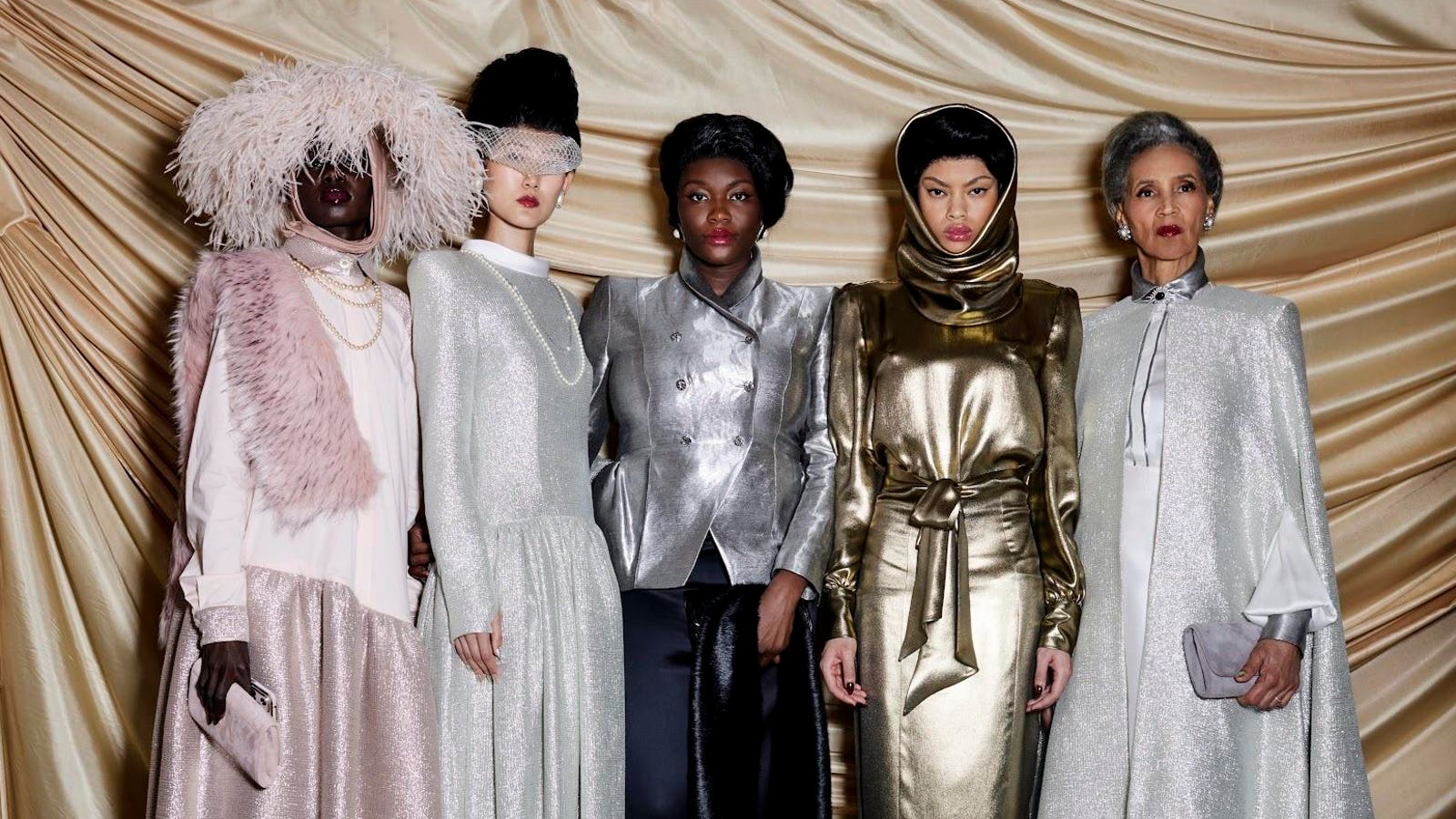
In the dazzling wave of revealing runway designs at London Fashion Week, Deborah Latouche, the genius behind Sabirah, truly owned the spotlight with an exceptional twist. Picture this: an ultra-luxurious, yet refreshingly ultra-modest collection. Yes, you heard me right – ultra-modest. With “Sabirah” translating to “of great patience” in Arabic, I believe Latouche set a remarkable precedent for trailblazing leaders. She demonstrated a bold approach to challenging the fashion norms, showcasing elegance through coverage, not exposure. Sabirah isn’t just a collection; it’s a disruptive statement in the world of high fashion.
So, what’s the key lesson from this patient provocateur who’s clearly mastered a lesson or two from The Kim Kardashian Principle?
Firstly, unleash your creativity and broaden your horizons. Deborah Latouche’s transformative journey, from furniture designer to fashion journalist, and now a celebrated stylist and designer, underscores the importance of embracing diverse skills and exploring various career paths. She’s not just a “turnaround guru” or the “creative director” of Sabirah; she’s more – proudly labeling herself as an everywoman, a self-proclaimed generalist with creativity at her core. And I think she’s onto something. Companies are increasingly valuing versatile skills, with a report highlighting the growing emphasis on learning and development for career progression. In fact, 76% of the Gen-Z demographic recognizes the value of continuous learning for career progression.
16th February 2024, Somerset House, London. Sabirah presents their designs as part of London Fashion … [+]
Olu Ogunshakin / Chris Yates Media
Secondly, brand not just for yourself but for your communities. Sabirah brand caters to modest dressers, challenging traditional notions of luxury and modest fashion. Deborah’s shift to the Arabic name Sabirah, post her conversion to Islam, addressed not only her personal quest for high-end, fashionable modest wear but also aimed to dress her community of modestly-dressing Muslim women. And I’m all here for it because building for yourself and your communities is a strategic move, fostering loyalty and customer retention. Cultivating a brand community works, with 68% of audience members being inclined to produce brand-related videos due to their community affiliation. Furthermore, 91% of consumers are more predisposed to share reviews because of their community association.
16th February 2024, Somerset House, London. Sabirah presents their designs as part of London Fashion … [+]
Olu Ogunshakin / Chris Yates Media
Thirdly, and I’ve emphasized this before, brand to celebrate diversity and inclusivity. The Sabirah runway celebrated diversity, featuring models of different ages, races, and hair textures. I for one breathed a sigh of relief to see this refreshing change amongst the sea of same old faces and bodies at fashion week. This intentional inclusivity not only celebrates diversity but also underscores the importance of representation in an otherwise super open-minded industry grappling with a diversity gap. How ironic is that? A recent study revealed that only 9% of executive roles in British fashion are held by people of color, highlighting the need for change. I can personally attest to nearly always being one of a few, if not the only South Asian model and influencer in the room.
In essence?
Sabirah represents the power of patience, creativity, and diversity in shaping purpose-driven, modern brands. I say the brand is a beacon for those interested in creating a more vibrant and inclusive world. Now seriously, when on earth is Sabirah launching their men’s range? This patience test is real!
Named Esquire’s Influencer Of The Year, Jeetendr Sehdev is a media personality, international speaker and the author of the New York Times bestselling sensation, The Kim Kardashian Principle: Why Shameless Sells (and How to Do It Right.)
